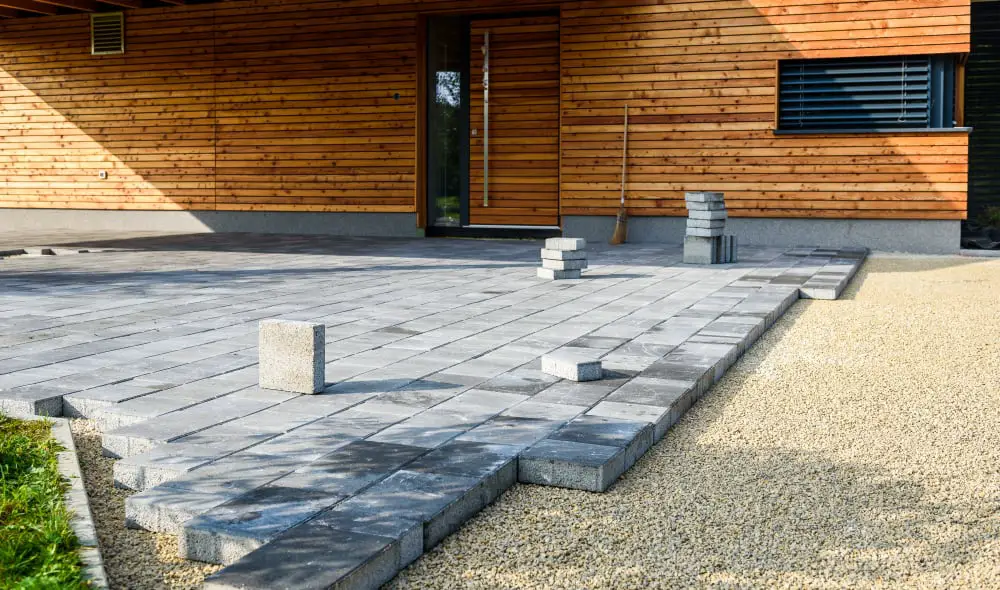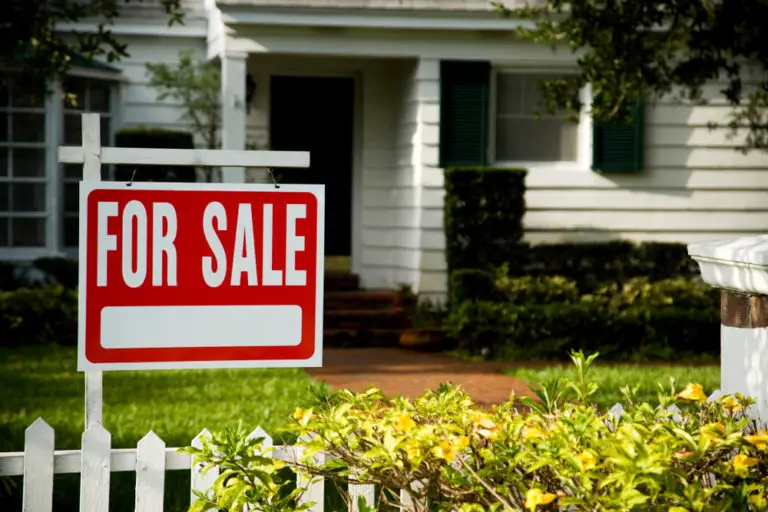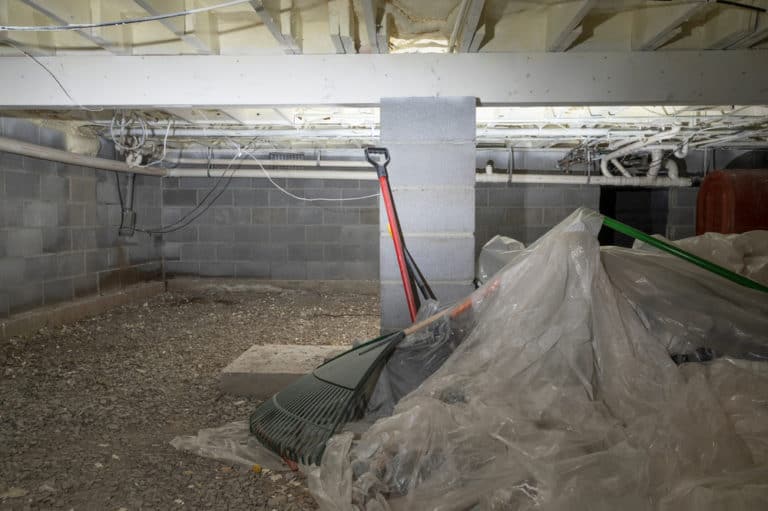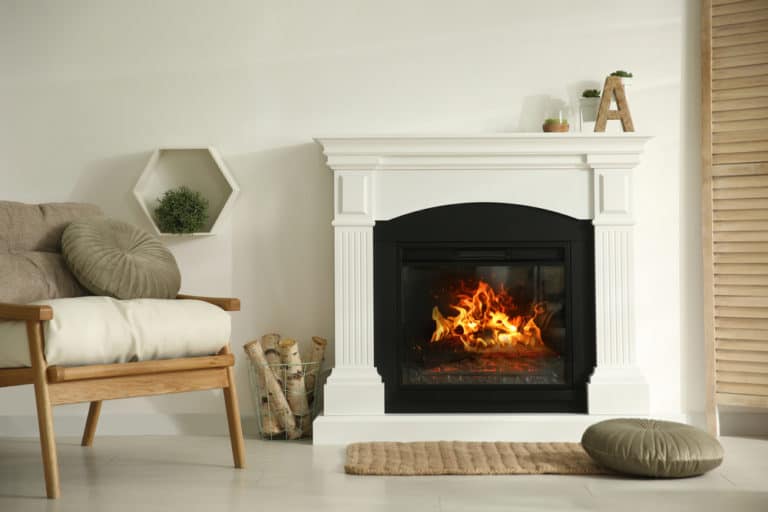Should There Be A Gap Between Pavers And A House?
The amount of space between a house and the pavers that border it is up for debate. Some think one inch is acceptable, while others allow as much as three inches before they’re concerned. While there doesn’t seem to be a set rule, if you take a look at other homes in your neighborhood, you’ll see some consistency as to how much space is given.
Most homes do have a gap between pavers and a house to help with drainage, stability, and appearance. To determine the distance between pavers and a house, first, calculate the length of the house, and multiply it by .05 inches. Next, measure out 12 inches of mortar, and space the pavers 12 inches apart.
If you’re building a path to a house, a deck, a patio, or a pool and would like to add some functionality or appeal to your project while minimizing cost, consider stepping stones or pavers.
While there are pros and cons when installing pavers or stepping stones in addition to your regular walkway material, they can add value to your home while giving you the ability to add color and texture that fits your personality.
For many homeowners, installing stone pavers is a frugal way of saving money while creating an eye-catching path that leads into their home. And, you have to ensure you master the required spacing to prevent upcoming challenges.
How To Make The Right Spacing Choice with Pavers?
One of the important things to consider when talking about improving your home is the outside. It is vital to think about how your home will look on the outside as well as the inside, and this goes for how your landscape as well as where you place patio furniture. The last thing you would want to feel is as though they live in prison or some maximum-security housing unit, and landscape comes into play here.
And, while doing everything, you have to know the amount of spacing you need to have between your pavers and house or property. Ideally, the spacing recommended by experts has to be calculated.
To determine the distance between pavers and a house, first, calculate the length of the house, and multiply it by .05 inches. Next, measure out 12 inches of mortar, and space the pavers 12 inches apart.
The pavers should also be one-half inch from the wall of the house. When the pavers are laid, you should cut off the excess mortar with a trowel, leaving 1/4-inch between each paver. This is the recommended spacing for use by homeowners. However, you are at liberty to use any other based on your taste and preference.
What To Know More About Pavers
Pavers come in many different styles, sizes, and materials, but the main drawback is their cost. The quality of a paver’s brick and mortar is key to its longevity. Pavers come in two basic types: brick and concrete.
Brick pavers are by far the most popular choice for walkways, driveways, and patios. These pavers typically cost less per square foot than concrete pavers and, if properly installed, they will last a lifetime.
Concrete pavers are an excellent choice for patios, walkways, and driveways. They come in many different colors, styles, and sizes. They are highly durable and, if properly installed, will last for many years. The drawback of concrete pavers is that they are costly – usually double the cost of brick pavers.
Before you select pavers, consider your budget, intended purpose, and the style of your home. While many homeowners choose pavers for their driveways, walkways, and patios, they still have to be correctly installed and maintained.
Pavers come in various colors and styles. Popular colors include charcoal, tan, red, gray, beige, and buff. When choosing pavers, consider the texture of the brick and the style of each brick.
Smooth bricks are recommended for walkways and driveways. Bricks that have large voids between the individual bricks are recommended for patios or areas where moisture may be an issue. You can purchase pavers from a local home improvement store or a paving specialist.
The Pros of A Longer Space Between Pavers And House
When building a new home, you need to consider the space between the house and the pavers. You should consider the size of the house, the size of pavers, and the space in between.
It is recommended you leave a space of at least 6 inches between your driveway or sidewalk and the outside joist or curb. Pavers are typically placed directly on aggregate. This can be problematic when the surface settlement occurs away from the paver.
A longer space between pavers and house is important for these reasons:
- Pavers should be placed with a small amount of space between them and the home. This can help reduce the chances that the pavers will shift from their base.
- The longer the space between pavers and the house, the more psychologically impressive the driveway is.
- A longer space between the pavers and the house is better for drainage. It allows water to flow out instead of pooling between the pavers and the wood framing of the house. Water pooling behind the pavers can break down the mortar in between, creating more damage.
- A longer space provides easier access to the house and helps you create a welcoming feel to your home.
- Keep your design and landscaping costs low by leaving a gap between the last paver and the foundation of your home. That little extra space provides an easy access route for installing utilities such as water service lines, gas service lines, and sewer drain manholes. All of which must be installed underground before you even get to your paver walkway design ideas.
When choosing suitable pavers for a project, know that a longer space between pavers and the house has lots of benefits in addition to having a beautiful driveway or patio.
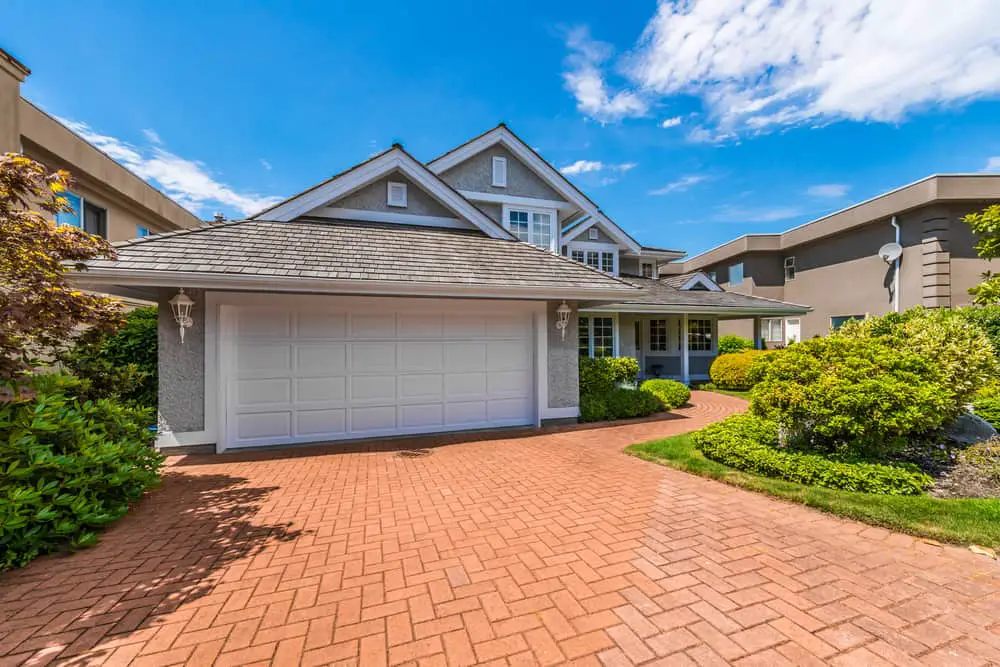
How To Choose The Right Paver For Your Project
An exterior paver – or concrete patio – is the perfect solution for adding a durable and attractive floor to your outdoor living space. These days, with an array of options, it can be hard to decide which kind of paver best suits your needs.
The proper choice of paving stone or brick for your outdoor project can be a difficult one. Many people select a specific pattern or color without thinking about the type of paver. If you choose the right paver for your job, it will add value to your house, make your home look more attractive, and last longer.
When choosing pavers, you should think about the people who will use the outdoor space. If you have children, you will want to select pavers that are durable and easy to maintain. If you have rambunctious dogs who love to dig, choose pavers that are heavier than the pavers you would purchase for your garden.
When paving stones or bricks are used outdoors, they are exposed to UV rays and weather. This is why you need to choose pavers that are durable and have a thick coat of sealant. When you are choosing a paver, there are a variety of colors and styles to choose from. Most pavers come in natural earth tones or in colors that replicate natural stone.
Conclusion
There should be a gap between the house and pavers. Paver manufacturers say that it is not necessary to allow for an interval. With this in mind, many people are led to think that a gap should not be left between a house and a paver patio.
Gaps will diminish the perfection of the patio, so perhaps you should consider a squeegee or a tool to put down joints with a paver patio.
But it’s worth noting that your house is the most expensive thing you’ll ever own. Maybe your central problem is how to protect it from nature, or perhaps you want to add some attractive landscaping.
If so, pavers are an excellent option. Pavers come in many forms and can be used in a number of ways. Whether your job is big or small, remember that quality pavers will last for decades, so take your time when deciding what to buy.

